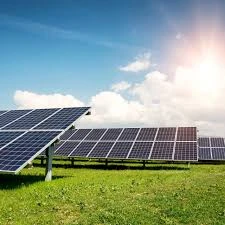sizes of solar panels available
Understanding the Sizes of Solar Panels Available
As the world increasingly turns to renewable energy sources, solar power has emerged as one of the most promising options for sustainable energy generation. One of the pivotal factors affecting the efficiency and practicality of solar energy systems is the size of the solar panels themselves. Understanding the different sizes of solar panels available on the market is essential for homeowners and businesses considering a solar installation.
Solar panels come in various sizes, ranging from small, portable units to larger panels designed for maximum energy output. The most common residential solar panels have dimensions approximately 65 inches by 39 inches, which translates to a surface area of about 17.5 square feet. These standard panels typically produce between 250 to 400 watts of power, depending on their efficiency and technology. The wattage output is crucial as it determines how many panels will be needed to meet energy demands.
For commercial applications, larger solar panels that can produce more power are available. These panels, often installed on rooftops of commercial buildings or solar farms, can measure up to 78 inches by 40 inches. They can generate between 350 to 600 watts each, making them highly efficient for large-scale energy production. Companies often prefer these larger panels to minimize installation costs and maximize energy output within limited space.
sizes of solar panels available

In addition to standard-sized panels, there are compact solar panels that are ideal for specific applications, such as RVs, boats, or tiny homes. These panels are smaller—some as compact as 24 inches by 36 inches—and typically generate lower wattage, around 50 to 150 watts. Their size makes them easily mountable and portable, catering to the needs of adventure enthusiasts and those who require flexible energy solutions.
When deciding on the size of solar panels, it’s essential to consider the available space for installation. Smaller roofs may require more compact panels or a higher number of smaller units to achieve the desired energy output. Conversely, larger roofs can accommodate the standard or larger-sized panels more efficiently, reducing the total number of panels needed.
Another important aspect to consider is the efficiency of solar panels, which varies based on the materials used and the technology implemented. Higher efficiency panels can generate more electricity from the same amount of sunlight, allowing for more energy production in a smaller space. This is particularly beneficial for urban settings where roof space is limited.
Ultimately, the choice of solar panel size will depend on a variety of factors, including the energy needs of the user, available installation space, and budget. Understanding the sizes of solar panels available is a significant step toward making an informed decision that maximizes energy production while fitting seamlessly into the existing infrastructure. As solar technology continues to evolve, it is likely that we will see even more options in panel sizes and efficiencies, making solar energy accessible to a broader audience.
-
String Solar Inverter: The High-Efficiency Solution for Smart Solar EnergyNewsJul.14,2025
-
Revolutionizing Rooftop Energy with the Power of the Micro Solar InverterNewsJul.14,2025
-
Power Independence with Smart Off Grid Solar Inverter SolutionsNewsJul.14,2025
-
On Grid Solar Inverter: Powering the Future with Smart Grid IntegrationNewsJul.14,2025
-
Monocrystalline Solar Panels: High-Efficiency Power for the Future of Clean EnergyNewsJul.14,2025
-
Bifacial Solar Panel: A Smarter Investment for Next-Generation Energy SystemsNewsJul.14,2025







